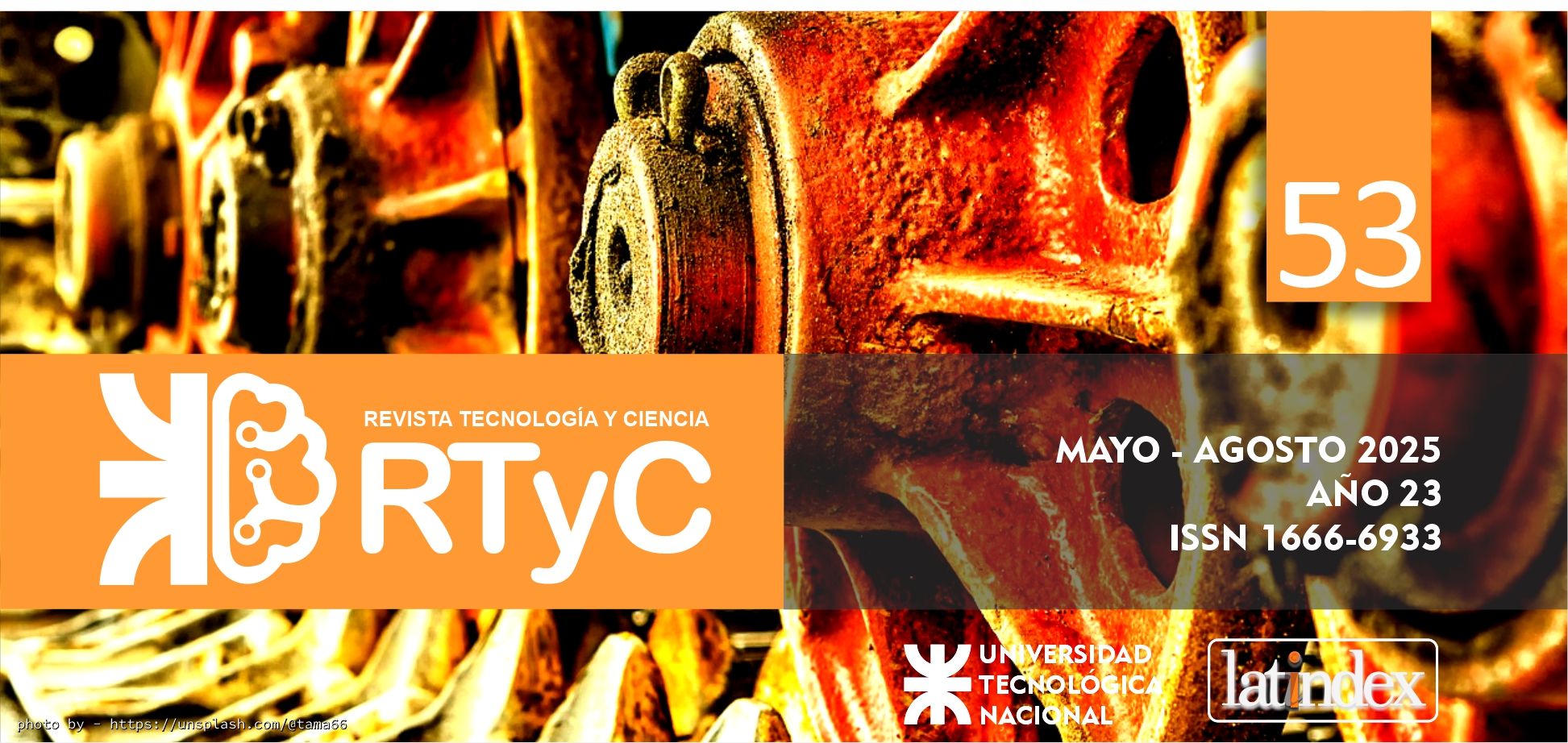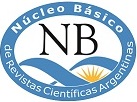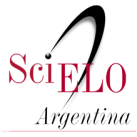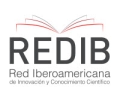Potentially toxic effect of a carwash effluent on heterotrophic bacteria
DOI:
https://doi.org/10.33414/rtyc.53.57-78.2025Keywords:
Probit analysis, Industrial effluents, Hydrocarbons, Growth inhibition, Ecotoxicological effectAbstract
The potentially toxic effect of a vehicle wash effluent on heterotrophic bacteria from two different origins was evaluated: water from the Lake Maracaibo estuary and fertile soil. The standard plate count technique was applied with a 24-h exposure period to the effluent in proportions of 25, 50, 75, and 100 %, and the inhibitory concentrations affecting 10, 50, and 90 % of the essay community (IC10, IC50, and IC90) were finally calculated by Probit analysis. The effluent presented high levels of color, total solids, organic matter, oils and fats, total hydrocarbons, and sulfate. The toxic effect of the effluent was low with IC50 values between 93.3 and 96.7 % and toxicity units between 1.03 and 1.07, demonstrating the high capacity of these bacteria to tolerate highly contaminated environments.
Downloads
References
Abdelshafy, A. M., Mahmoud, A. R., Abdelrahman, T. M., Mustafa, M. A., Atta, O. M., Abdelmegiud, M. H. & Al-Asmari, F. (2024). Biodegradation of chemical contamination by lactic acid bacteria: a biological tool for food safety. Food Chemistry, 460(Part 2), 140732. https://doi.org/10.1016/j.foodchem.2024.140732
Akhavan, S., Sharifian, S., Zolfaghari, M., Khalily, D. & Rashedi, H. (2015). Study on heavy metal resistant fecal coliforms isolated from industrial, urban wastewater in Arak, Iran. International Journal of Environmental Research, 9(4), 1217-1224. https://ijer.ut.ac.ir/article_1012_046d66429eddbcf6b4fa29aff1b557cb.pdf
Aladwan, M. M., Dababneh, B. F., Farah, H. S. & Abusala, M. A. H. (2024). Identification of oil degrading bacteria from oil-contaminated soil in the Northeastern part of Jordan. Journal of Ecological Engineering, 25(5), 306-320. https://doi.org/10.12911/22998993/186502
Al-Odwani, A., Ahmed, M. & Bou-Hamad, S. (2007). Carwash water reclamation in Kuwait. Desalination, 206(1-3), 17-28. https://doi.org/10.1016/j.desal.2006.03.560
American Public Health Association (APHA), American Water Works Association (AWWA), Water Environment Federation (WEF). (2023). Standard methods for the examination of water and wastewater. 24th edition. Lipps, W. C., Braun-Howland, E. B. & Baxter, T. E. (Eds.). Washington, D.C.: American Public Health Association.
Bai, B., Zhang, L., Dong, H. & Huang, Y. (2023). Coupled Fe(III) reduction and phenanthrene degradation by marine-derived Kocuria oceani FXJ8.057 under aerobic condition. Journal of Hazardous Materials, 459, 132237. https://doi.org/10.1016/j.jhazmat.2023.132237
Bautista, S. (1997). Proceso de salinización en el Lago de Maracaibo. Maracaibo: Instituto para el Control y la Conservación del Lago de Maracaibo.
Bedoui, A., Tigini, V., Ghedira, K., Varese, G.C. & Ghedira, L. C. (2015). Evaluation of an eventual ecotoxicity induced by textile effluents using a battery of biotests. Environmental Science and Pollution Research, 22, 16700-16708. https://doi.org/10.1007/s11356-015-4862-3
Belal, B. E., Sidkey, N. M., Gad, W. A. & El-Gendy, S. S. (2020). Biodegradation of organochlorine pesticides by means of Pectobacterıum wasabiae. International Journal of Oceanography & Aquaculture, 4(1), 000183. https://doi.org/10.23880/ijoac-16000183
Bohórquez-Echeverry, P. & Campos-Pinilla, C. (2007). Evaluación de Lactuca sativa y Selenastrum capricornutum como indicadores de toxicidad en aguas. Universitas Scientiarum, 12(2), 83-98. https://www.redalyc.org/pdf/499/49910969006.pdf
Boussu, K., Kindts, K., Vandecasteele, C. & Van Der Brugger, B. (2007). Applicability of nanofiltration in the carwash industry. Separation and Purification Technology, 54(2), 139-146. https://doi.org/10.1016/j.seppur.2006.08.024
Carter, M. R. & Gregorich, E. G. (2008). Soil sampling and methods of analysis. 2nd edition. Boca Raton: CRC Press, Taylor & Francis. https://doi.org/10.1111/j.1365-2389.2008.01052_5.x
Castañeda, M. (2009). Microbiología aplicada: manual de laboratorio. México D. F.: Universidad Autónoma Metropolitana. https://zaloamati.azc.uam.mx/items/dc777a0e-9304-490c-99d2-82610197ec9a
Castro, S., Espinola, C., Miguez, D. & Viana, F. (2002). Los bioensayos como herramientas de evaluación de la toxicidad de los efluentes industriales en Uruguay. Montevideo: Laboratorio Tecnológico del Uruguay. https://idl-bnc-idrc.dspacedirect.org/items/2c5c5205-33a4-4026-bc0d-8c42b07fcef5
Castro-Echavez, F. L. & Marín-Leal, J. C. (2018). Comparación de la ecotoxicidad por metales pesados sobre bacterias heterótrofas de dos sitios contrastados del Lago de Maracaibo (Venezuela). Revista Facultad de Ciencias Básicas, 14(1), 9-17. https://doi.org/10.18359/rfcb.2825
Celaya-Michel, H. & Castellanos-Villegas, A. E. (2011). Mineralización de nitrógeno en el suelo de zonas áridas y semiáridas. Terra Latinoamericana, 29(3), 343-356. https://www.redalyc.org/pdf/573/57321283013.pdf
Das, N. & Chandran, P. (2011). Microbial degradation of petroleum hydrocarbon contaminants: an overview. Biotechnology Research International, 2011, 941810. https://doi.org/10.4061/2011/941810
Decreto 883. (1995). Normas para la clasificación y el control de la calidad de los cuerpos de agua y vertidos o efluentes líquidos. Gaceta Oficial N° 5021. Caracas: Asamblea Nacional de la República Bolivariana de Venezuela.
Díaz-Borrego, L., Dupontt, J., Espina, K., Rincón, N., García, M. & Atencio, L. (2007). Utilización de sustratos orgánicos y resistencia a metales pesados por bacterias asociadas a Lemna spp. Boletín del Centro de Investigaciones Biológicas, 41(1), 27-43. https://produccioncientificaluz.org/index.php/boletin/article/view/89
Dudhagara, D. R. & Dave, B. P. (2018). Mycobacterium as polycyclic aromatic hydrocarbons (PAHs) degrader. In: Mycobacterium – Research and Development. Ribón, W. (Ed.). London: IntechOpen Limited. https://dx.doi.org/10.5772/intechopen.73546
Durve, A., Naphade, S., Bhot, M., Varghese, J. & Chandra, N. (2012). Characterisation of metal and xenobiotic resistance in bacteria isolated from textile effluent. Advances in Applied Science Research, 3(5), 2801-2806. https://www.primescholars.com/articles/characterisation-of-metal-and-xenobiotic-resistance-in-bacteria-isolated-fromtextile-effluent.pdf
Emmanuel-Akerele, H. A., Akinyemi, P. O. & Igbogbo-Ekpunobi, O. E. (2022). Isolation and identification of plastic degrading bacteria from dumpsites Lagos. Advances in Environmental Technology, 1, 59-71. https://doi.org/10.22104/AET.2022.5268.1428
Fall, C., Moleon, M., Ba, M., Delgado, C., Mulido, D. & Chavez, M. (2007). Carwash wastewater: characteristic, volume, and treatability by gravity oil separation, Revista Mexicana de Ingeniería Química, 6(2), 175-184. http://www.redalyc.org/articulo.oa?id=62060206
Feknous, N., Branes, Z., Batisson, I. & Amblard, C. (2019). Growth of indigenous bacteria Vibrio alginolyticus and Dietzia sp. isolated from the east coast of Algeria in the presence of monoaromatic hydrocarbons. Environment Protection Engineering, 45(3), 127-137. https://doi.org/10.5277/epe190309
Feng, H., Xu, L., Chen, R., Ma, X., Qiao, H., Zhao, N., Ding, Y. & Wu, D. (2022). Detoxification mechanisms of electroactive microorganisms under toxicity stress: a review. Frontiers in Microbiology. 13, 1084530. https://doi.org/10.3389/fmicb.2022.1084530
García-González, V., Sánchez-Mesa, J. C., Pacheco-Salazar, V. F., Ávila-González, C. de J., Pavón-Silva, T. B. & Guerrero-González, P. (2005). Respuestas de toxicidad de bioensayos empleados en la evaluación de aguas residuales de la industria. Memorias. México D. F.: Universidad Autónoma del Estado de México.
Garrity, G. M. (Ed.). (2010). Bergey’s manual of systematics bacteriology. 2nd edition. New York: Springer.
Halverson, L. J. (2005). Bacteria, soil. Encyclopedia of Soils in the Environment, 2005, 115-122. https://doi.org/10.1016/B0-12-348530-4/00135-1
Hashim, N. H. & Zayadi, N. (2016). Pollutants characterization of car wash wastewater. MATEC Web of Conferences, 47, 05008. https://doi.org/10.1051/matecconf/20164705008
Hu, F., Wang, P., Li, Y., Ling, J., Ruan, Y., Yu, J. & Zhang, L. (2023). Bioremediation of environmental organic pollutants by Pseudomonas aeruginosa: mechanisms, methods and challenges. Environmental Research, 239(Part 1), 117211. https://doi.org/10.1016/j.envres.2023.117211
International Soil Reference and Information Centre – ISRIC & Food and Agriculture Organization of the United Nations – FAO. (2002). Procedures for soil analysis. Van Reeuwijk, L. P. (Ed.). Wageningen: International Soil Reference and Information Centre. https://www.isric.org/sites/default/files/ISRIC_TechPap09.pdf
Jiménez, J. G., Gelabert, R. & Brito, R. (2006). Efectos tóxicos del níquel y el zinc en Artemia franciscana (Crustacea: Branchiopoda: Anostraca). Universidad y Ciencia, 22(1), 65-74. https://www.redalyc.org/pdf/154/15402205.pdf
Kot-Wasik, A., Dąbrowska, D. & Namieśnik, J. (2004). The importance of degradation in the fate of selected organic compounds in the environment. Part I. General considerations. Polish Journal of Environmental Studies, 13(6), 607-616. https://www.pjoes.com/pdf-87705-21564?filename=21564.pdf
Kumari, S., Amit & Jamwal, R. (2022). Isolation and identification of Jeotgalicoccus sp. CR2 and evaluation of its resistance towards heavy metals. Cleaner Waste Systems, 3, 100062. https://doi.org/10.1016/j.clwas.2022.100062
Lee, Y. C., Whang, L. M., Ngo, M. H., Chen, T. H. & Cheng, H. H. (2016). Acute toxicity assessment of TFT-LCD wastewater using Daphnia similis and Cyprinus carpio. Process Safety and Environmental Protection, 104 (Part B), 499-506, http://dx.doi.org/10.1016/j.psep.2016.03.003
Lin, Q., Zhou, X., Zhang, S., Gao, J., Xie, M., Tao, L., Sun, F., Shen, C., Hashmi, M. Z. & Su, X. (2022). Oxidative dehalogenation and mineralization of polychlorinated biphenyls by a resuscitated strain Streptococcus sp. SPC0. Environmental Research, 207, 112648. https://doi.org/10.1016/j.envres.2021.112648
Liwarska-Bizukojc, E., Miksch, K., Malachowska-Jutsz, A. & Kalka, J. (2005). Acute toxicity and genotoxicity of five selected anionic and nonionic surfactants. Chemosphere, 58(9), 1249-1253. https://doi.org/10.1016/j.chemosphere.2004.10.031
MacFaddin, J. (2004). Pruebas bioquímicas para la identificación de bacterias de importancia clínica. 3ra edición. Madrid: Editorial Panamericana.
Madigan, M., Martinko, J. & Parker, J. (2004). Brock, biología de los microorganismos. 9na edición. Madrid: Ediciones Prentice-Hall Inc.
Marín-Leal, J. C., Carrasquero-Ferrer, S. J., Pire-Sierra, M. C. & Behling de Calmón, E. H. (2017). Dynamic of priority pollutants and wastewater adequacy in the Lake Maracaibo basin (Venezuela). Chapter 29. In: Ecotoxicology in Latin America. Araújo, C. V. M. & Shinn, C. (Eds.). Nueva York: Nova Science Publishers Inc.
Messrouk, H., Mahammed, M. H., Touil, Y. & Amrane, A. (2014). Physico-chemical characterization of industrial effluents from the town of Ouargla (South East Algeria). Energy Procedia, 50, 255-262. https://doi.org/10.1016/j.egypro.2014.06.031
Murray, P., Baron, E., Faller, M., Tenover, F. & Yolken, R. (1999). Manual of clinical microbiology. 6th edition. Washington D. C.: ASM Press.
Nguegang, B., Sibanda, T. & Tekere, M. (2019). Cultivable bacterial diversity, physicochemical profiles, and toxicity determination of car wash effluents. Environmental Monitoring and Assessment, 191, 478. https://doi.org/10.1007/s10661-019-7600-3
Organisation for Economic Co-operation and Development – OECD. (2002). Test No. 423: acute oral toxicity – Acute toxic class method. OECD Guideline for Testing of Chemicals. Section 4. Paris: Organisation for Economic Co-operation and Development. https://doi.org/10.1787/9789264071001-en
Pandolfo, E., Caracciolo, A. B. & Rolando, L. (2023). Recent advances in bacterial degradation of hydrocarbons. Water, 15(2), 375. https://doi.org/10.3390/w15020375
Park, J., Shin, K., Lee, H., Choi, S., Kim, G., Depuydt, S., De Saeger, J., Heynderickx, P. M., Wu, D., Asselman, J., Janssen, C. & Han, T. (2023). Evaluating ecotoxicological assays for comprehensive risk assessment of toxic metals present in industrial wastewaters in the Republic of Korea. Science of the Total Environment, 867, 161536. https://doi.org/10.1016/j.scitotenv.2023.161536
Pettifor, B. J., Doonan, J., Denman, S. & McDonald, J. E. (2020). Survival of Brenneria goodwinii and Gibbsiella quercinecans, associated with acute oak decline, in rainwater and forest soil. Systematic and Applied Microbiology, 43(2), 126052. https://doi.org/10.1016/j.syapm.2019.126052
Phungula, S. P. (2016). An evaluation of the water quality and toxicity of wastewater at selected car wash facilities in Tshwane, Gauteng. Master´s thesis. Pretoria: University of South Africa. https://uir.unisa.ac.za/items/2f9c650e-11f0-477a-baa6-6720dd778905
Pikula, K. S., Chernyshev, V. V., Zakharenko, A. M., Chaika, V. V., Waissi, G., Le Hong, H., To Trong, H., Tsatsakis, A. M. & Golokhvast, K. S. (2019). Toxicity assessment of particulate matter emitted from different types of vehicles on marine microalgae, Environmental Research, 179, 108785. https://doi.org/10.1016/j.envres.2019.108785
Pire, M., Castro, F., Marín, J. & Díaz, A. (2013). Toxicidad e infiltración en el suelo del efluente de una tenería almacenado en lagunas. Memorias del Congreso de Ciencias Ambientales (COPIME 2013). Buenos Aires: Consejo Profesional de Ingeniería Mecánica y Electricista.
Plaza, G. A., Jangid, K., Lukasik, K., Nalecz-Jawecki, G., Berry, C. J. & Brigmon, R. L. (2008). Reduction of petroleum hydrocarbons and toxicity in refinery wastewater by bioremediation. Bulletin of Environmental Contamination and Toxicology, 81, 329-333. https://doi.org/10.1007/s00128-008-9411-z
Primadani, I. P. P., Ratnaningsih, R. & Rinanti, A. (2021). Removal of crude oil by Thiobacillus sp. and Clostridium sp. at various temperatures and concentration of pollutant in liquid media. IOP Conference Series: Materials Science and Engineering, 1098, 052034. https://doi.org/10.1088/1757-899X/1098/5/052034
Ren, S. (2004). Assessing wastewater toxicity to activated sludge: recent research and developments. Environment International, 30(8), 1151-1164. https://doi.org/10.1016/j.envint.2004.06.003
Reynolds, J. (2002). Laboratory procedures manual. Dallas: Richland College.
Sablayrolles, C., Vialle, C., Vignoles, C. & Montrejaud-Vignoles, M. (2010). Impact of carwash discharge on stormwater quality (Toulouse, France). Water, Science & Technology, 62(12), 2737-2746. https://doi.org/10.2166/wst.2010.929
Sáenz, M. E., Tortorelli, M. del C. & Freyre, L. R. (2003). Evaluación de la fitotoxicidad de efluentes industriales. Limnetica, 22(3-4), 137-146. https://www.limnetica.com/documentos/limnetica/limnetica-22-2-p-137.pdf
Sánchez, T., León, J., Woolcott, J. & Arauco, K. (2004). Proteasas extracelulares producidas por bacterias marinas aisladas de aguas contaminadas con efluentes pesqueros. Revista Peruana de Biología, 11(2), 179-186. http://www.scielo.org.pe/pdf/rpb/v11n2/v11n2a10.pdf
Sarmadi, M., Zarei, A. A., Ghahrchi, M., Sepehrnia, B., Meshkinian, A., Moein, H., Nakhaei, S. & Bazrafshan, E. (2021). Carwash wastewater characteristics – a systematic review study. Desalination and Water Treatment, 225, 112-148. https://doi.org/10.5004/dwt.2021.26972
Šaulienė, I., Motiekaitytė, V., Marčiulionienė, D. & Montvydienė, D. (2004). Application of biotests for toxicity evaluation of leachate and toxic tolerant vegetation processes in exploited landfill. Proceedings of the International Scientific Conference of 80 years Anniversary of Lithuanian University of Agriculture (Vandens telkinių apsauga ir valdymas [Protection and management of water bodies]). Kaunas: Lithuania, 194-198.
Talebzadeh, F., Valeo, C., Gupta, R. & Constabel, C. P. (2021). Exploring the potential in LID technologies for remediating heavy metal pollution from carwash wastewater. Sustainability, 13(16), 8727. https://doi.org/10.3390/su13168727
Tekere, M., Sibanda, T., Maphosa, F. & Momba, M. N. B. (2016). An evaluation of the water quality and toxicity of wastewater at selected car wash facilities in Tshwane, Gauteng. Water SA, 42(4), 603-610. https://doi.org/10.4314/wsa.v42i4.09
Tonkes, M. & Baltus, C. A. M. (1997). Praktijkonderzoek aan complexe efflenetenmet de totaal effluent milieubezwaarlikheid (TEM) – Metodiek. RIZA – rapportnummer 97.033. Lelystad: Institute for Inland Water Management and Waste Water Treatment (RIZA). https://www.ircwash.org/biblio/author/9383
Tonkes, M., de Graaf, P. J. F. & Graansma, J. (1999). Assessment of complex industrial effluents in the Netherlands using a whole effluent toxicity (or WET) approach. Water Science Technology, 39(1), 55-61. http://dx.doi.org/10.1016/S0273-1223(99)00253-X
U. S. Department of Agriculture – USDA. (2018). Using soil textural triangle. Washington D. C.: United States Department of Agriculture. https://www.sdsoilhealthcoalition.org/wp-content/uploads/2020/01/Using-Textural-Triangle-lesson-3-021318.pdf
U. S. Environmental Protection Agency – USEPA. (2000). Glossary. Understanding and accounting for method variability in WET applications under the NPDES program. Washington D. C.: United States Environmental Protection Agency. https://www3.epa.gov/npdes/pubs/f-glossy.pdf
U. S. Environmental Protection Agency – USEPA. (2016). 2015 annual effluent guidelines review report. Washington D. C.: United States Environmental Protection Agency. https://19january2017snapshot.epa.gov/sites/production/files/2016-06/documents/2015-annual-eg-review-report_june-2016.pdf
Waruguru, W. L. (2013). Determination of bacterial load and diversity inselected sites in Lake Nakuru, Kenya and their ability to degrade plastics and petroleum oil. Master´s thesis. Eldoret: University of Eldoret. http://erepository.uoeld.ac.ke/handle/123456789/1588
Wilhelm, R. C., Murphy, S. J. L., Feriancek, N. M., Karasz, D. C., DeRito, C. M., Newman, J. D. & Buckley, D. H. (2020). Paraburkholderia madseniana sp. nov., a phenolic acid-degrading bacterium isolated from acidic forest soil. International Journal of Systematic and Evolutionary Microbiology, 70, 2137-2146. https://doi.org/10.1099/ijsem.0.004029
Woźniak, P., Dubicki, M. & Gryta, M. (2023). Microbiological hazard analysis of car wash wastewater. Polish Journal of Environmental Studies, 32(4), 3871-3882. https://doi.org/10.15244/pjoes/163565
Published
How to Cite
Issue
Section
License
Copyright (c) 2025 Julio Marín, Paola Bruzual, Caneldy Pacheco, Laugeny Díaz

This work is licensed under a Creative Commons Attribution-NonCommercial 4.0 International License.

















